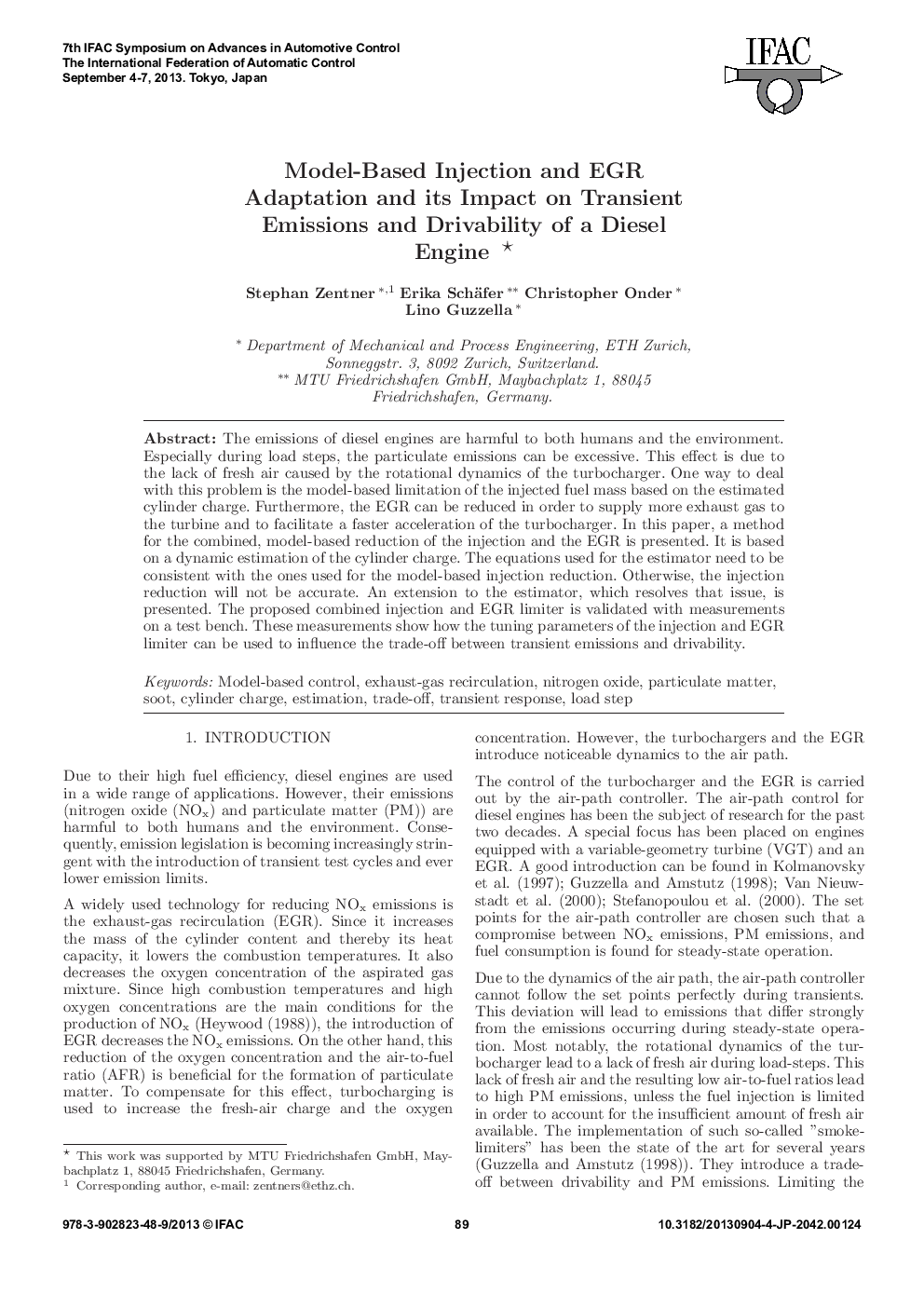| Article ID | Journal | Published Year | Pages | File Type |
|---|---|---|---|---|
| 715555 | IFAC Proceedings Volumes | 2013 | 6 Pages |
The emissions of diesel engines are harmful to both humans and the environment. Especially during load steps, the particulate emissions can be excessive. This effect is due to the lack of fresh air caused by the rotational dynamics of the turbocharger. One way to deal with this problem is the model-based limitation of the injected fuel mass based on the estimated cylinder charge. Furthermore, the EGR can be reduced in order to supply more exhaust gas to the turbine and to facilitate a faster acceleration of the turbocharger. In this paper, a method for the combined, model-based reduction of the injection and the EGR is presented. It is based on a dynamic estimation of the cylinder charge. The equations used for the estimator need to be consistent with the ones used for the model-based injection reduction. Otherwise, the injection reduction will not be accurate. An extension to the estimator, which resolves that issue, is presented. The proposed combined injection and EGR limiter is validated with measurements on a test bench. These measurements show how the tuning parameters of the injection and EGR limiter can be used to influence the trade-off between transient emissions and drivability.
